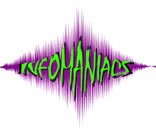A
Model for distributed Object/Relational Data, Media, and Knowledge
Systems
and applications using relational data are built on a standard mathematical
model - the relational algebra and calculus. Object support, now
being added to relational systems, makes for new choices in how
data is modeled, often in serious conflict with the prescriptions
of the relational model. These inconsistencies and incompatibilities
suggest a research study to prescribe a best practice in how
object extensions to relational databases should be employed and
exploited. The extended model developed in this project will address
these issues.
|
|
3D
4GL (3 Dimensional Fourth Generation Language)
Today,
the modeling and representation of dynamic, interactive 3D data
is supported by VRML, an open industry standard. A VRML scene graph
is in essence a special purpose 3D database, with the VRML specification
defining the database structure and possible content. As VRML 3D
databases become persistent, integrated, and multi-user, the need
will arise to conduct transactions against them as a matter of course.
The proposed VRML EAI (External Authoring Interface) is a low-level
API into the 3D data, not a high level, 4th generation language.
This
project seeks a 3D analog to SQL with which to construct and execute
3D transactions. Since the object database community (ODMG) has
converged on OQL (Object Query Language), which itself is likely
to converge with SQL in the eventual SQL3, we will develop a high
level, 4th generation 3D language as a sub-language of SQL3 that
can both (i) execute transactions against a VRML database, and
(ii) execute transactions incorporating interactive 3D data against
SQL3 object and object/relational databases. General purpose Object
and Object/Relational databases can then become the distributed
repositories for interactive 3D data.
|
|
Relational
Synthesis
The
conventional practice of normalizing relational data helps to insure
data integrity and reduce redundancy but at a cost - the "atoms"
of data that remain at the end of normalization must be re-assembled
by application programs into data "molecules" that have meaning
to the enterprise and to users. The Relational Synthesis Project
seeks to define uniform methods to assemble normalized data atoms
into molecules and larger application structures. Intelligent object/relational
views will likely serve as the architecture to support the developed
methods.
|
|
Temporal
Relational Data Modeling
The
value of data warehouses and repositories for data mining and decision
support have been realized by the enterprise. Recently, the problems
of maintaining a warehouse separate from the OLTP database have
become common knowledge as well. Temporal Relational Data Modeling
addresses this situation by prescribing a formalism to model enterprise
data so that OLTP operations and data mining and decision support
activities can share the same data and databases while meeting required
performance metrics. This research project will produce a modeling
formalism, compatible with relational theory, that supports a unified
data environment. Recommendations will also be offered to exploit
Object/Relational extensions for temporal modeling.
|
|

